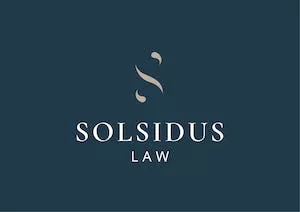Three giant telecommunication companies set a new record of patent applications filed with the WIPO in 2014. Chinese Huawei Technologies Co., Ltd led the way with 3,442 published PCT application followed by U.S.-based Qualcomm Inc. with 2,409 published applications. China's ZTE Corp. took third place with 2,179 applications. These record-breaking numbers denote the growing importance technology companies place in securing their innovating systems to the level afforded by patent protection. As the WIPO Director General Francis Gurry stated, the increasing importance of intellectual property has now moved from the periphery to the center of the global economic system. Patent protection affords a term of 20 years exclusive protection of the patented subject matter and to the holder of the patent, the right to prevent third parties from making, copying or using the subject matter without the owner's authority, or inducing others to do so. Do patents represent a solution for protecting the intellectual property associated with software creation and development?
Software represents one of the fastest evolving forms of intellectual property in our information society. Software makes our computers run. It consists of code that links a set of programmes, procedures, rules and documentation relevant to the operation of a computerised system. Computers help businesses run. Properly run businesses facilitate global economy. In a fast paced global economy, software developers are required to protect their product, and by extension their contribution to the global economy. There are generally four reasons why your software requires protection:
- To generate profit;
- To prevent others from generating profit form it;
- To prevent unrelated parties from using it without your consent;
- To protect ownership.
Although software is present in every-day devices used all over the world, the means available to effectively protect intellectual property vested in computer software are highly controversial. So how do you achieve IP protection of software, a subject matter interlinking ideas, expression of ideas, innovation, functionality and marketability?
The existing IP laws provide a starting point for the protection of software. A thorough consultation of the means available to protect the IP of software soon reveals severe limitations inherent in any single form of protection. There are generally three formal means of protecting IP through registration (where applicable) of:
- Trademark
- Patent
- Copyright
Software will be marketed under a trademark (a distinct brand name or mark), it will be subject to copyright (being the expression of the ideas or the recording of software's functionality), but will it be innovative enough to qualify for patent protection? And what happens to software revealed in a myriad of patent application forms in the countries software protection is sought?
A trademark will brand your software and connect it aesthetically to your end-users. Trademark protection ranges from 7 to 14 years and is renewable. Copyright vested in the software developed, will prevent third parties from copying or using it outside an agreed user-license. Copyright affords protection for the lifetime of its creator and up to 70 years after the creators passing. Both forms of IP protection have limitations when it comes to software. While trademark and copyright can secure the design, the brand, and the expression of the software in manuals describing and depicting the software, they cannot prevent third parties from copying the idea behind the creation and releasing a similar end product. What other steps are available to software developers?
There are two pressing reasons for which software developers seek patent protection; one, to protect the mathematical genius behind their invention (in a way that copyright cannot do) and two, a bullet-like increase of the software's market value. But when entering the murky waters of patent protection, software developers' better be wary. Protecting "genius" may be at the heart of patent applications, but exactly how much "genius" is required to earn the exclusive right of patented software? In an ever-evolving industry as software development, by the time a patent application reaches the national patent offices in the countries protection is sought (within 12 months of the filing of the first patent application) it may already be too late –someone else may have marketed software similar to it, and the element of "invention" or "novel" -both being strict requirements of patent applications- may be gone. Similarly, an overnight increase in share value upon the filing of a patent application may very well disappear if rumors spread of a similar product in the market or of any problems securing the patent.
Our clients in the software industry range from multinational corporations to startups looking to make their mark in the fluid business of computer programming. Our advice on protecting their software IP is to build up an IP protection strategy combining two main forms of protection: the formal ways offered by national, EU and International laws (such as trade mark, patent and copyright) and the informal ways inherent in contract law, and applied by end-user licenses and trade secrets. There is no single form of IP protection that will offer the certainty required by the billion-dollar industry of software programming. And why should there be? Each form of IP protection exists to achieve a single objective. The same way that software created is unique. Only a combination of protective ways tailored to the needs of a single software development company can represent by itself a solution.
It is time for EU and national IP laws to be brought up to-speed with our ever-growing information society. As coding gradually becomes a usual pastime for teenagers it is difficult to predict the range of new software applications that will be developed in the near future. Programming language depicted in computer screens is as much a piece of "work" as language depicted in dictionaries. Yet, court decisions like the UK decision in SAS Institute Inc. v World Programming Limited [2013] EWHC 69 (Ch) concluding that programming language is not protectable by copyright as the functional elements of a computer program are not protected under copyright law, create gaps and uncertainty in an industry that by definition can only evolve outside strong confines and restrictions.
An efficient software IP protection strategy will address the limitations offered by each IP protection method and will combine those methods or means that can safeguard a newly developed software. To this end, it is advisable to exploit the benefits afforded by treating the process for development of software as a "trade secret". Where an idea falls short of the strict patent requirements and provided it is kept away from public access, it may qualify for an elevated "trade secret" protection within the safeguards of contract law.
For more information on building your own exclusive IP protection strategy, feel free to speak to IP law experts Stella C. Koukounis at s.koukounis@solsiduslaw.com or George Vrikis at g.vrikis@solsiduslaw.com. For additional information on the ways Solsidus Law can assist please visit www.solsiduslaw.com.
Originally published January 2016
The content of this article is intended to provide a general guide to the subject matter. Specialist advice should be sought about your specific circumstances.

